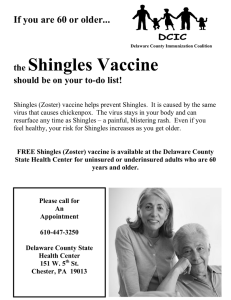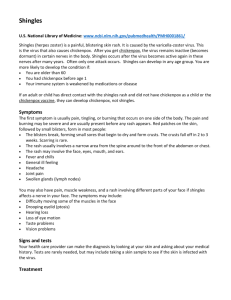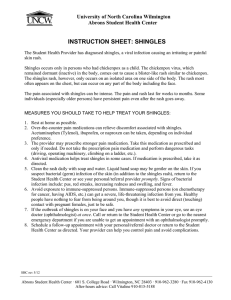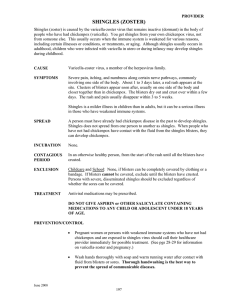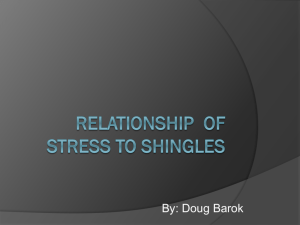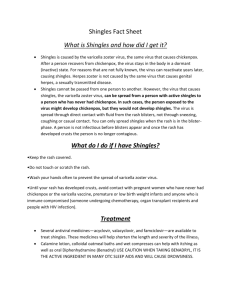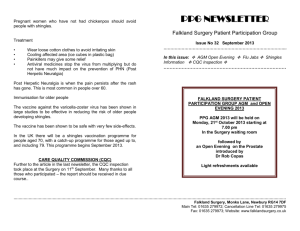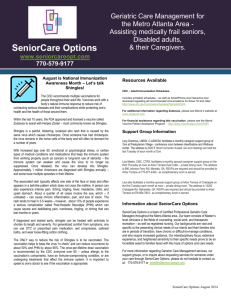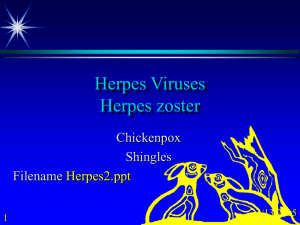SHINGLES
advertisement
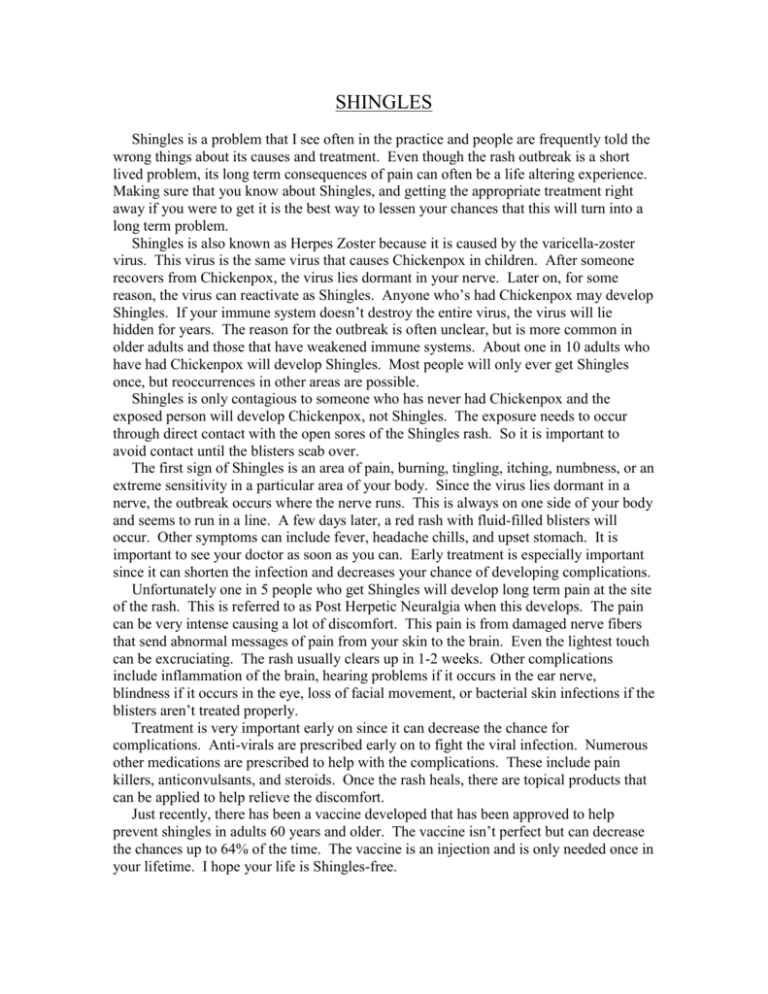
SHINGLES Shingles is a problem that I see often in the practice and people are frequently told the wrong things about its causes and treatment. Even though the rash outbreak is a short lived problem, its long term consequences of pain can often be a life altering experience. Making sure that you know about Shingles, and getting the appropriate treatment right away if you were to get it is the best way to lessen your chances that this will turn into a long term problem. Shingles is also known as Herpes Zoster because it is caused by the varicella-zoster virus. This virus is the same virus that causes Chickenpox in children. After someone recovers from Chickenpox, the virus lies dormant in your nerve. Later on, for some reason, the virus can reactivate as Shingles. Anyone who’s had Chickenpox may develop Shingles. If your immune system doesn’t destroy the entire virus, the virus will lie hidden for years. The reason for the outbreak is often unclear, but is more common in older adults and those that have weakened immune systems. About one in 10 adults who have had Chickenpox will develop Shingles. Most people will only ever get Shingles once, but reoccurrences in other areas are possible. Shingles is only contagious to someone who has never had Chickenpox and the exposed person will develop Chickenpox, not Shingles. The exposure needs to occur through direct contact with the open sores of the Shingles rash. So it is important to avoid contact until the blisters scab over. The first sign of Shingles is an area of pain, burning, tingling, itching, numbness, or an extreme sensitivity in a particular area of your body. Since the virus lies dormant in a nerve, the outbreak occurs where the nerve runs. This is always on one side of your body and seems to run in a line. A few days later, a red rash with fluid-filled blisters will occur. Other symptoms can include fever, headache chills, and upset stomach. It is important to see your doctor as soon as you can. Early treatment is especially important since it can shorten the infection and decreases your chance of developing complications. Unfortunately one in 5 people who get Shingles will develop long term pain at the site of the rash. This is referred to as Post Herpetic Neuralgia when this develops. The pain can be very intense causing a lot of discomfort. This pain is from damaged nerve fibers that send abnormal messages of pain from your skin to the brain. Even the lightest touch can be excruciating. The rash usually clears up in 1-2 weeks. Other complications include inflammation of the brain, hearing problems if it occurs in the ear nerve, blindness if it occurs in the eye, loss of facial movement, or bacterial skin infections if the blisters aren’t treated properly. Treatment is very important early on since it can decrease the chance for complications. Anti-virals are prescribed early on to fight the viral infection. Numerous other medications are prescribed to help with the complications. These include pain killers, anticonvulsants, and steroids. Once the rash heals, there are topical products that can be applied to help relieve the discomfort. Just recently, there has been a vaccine developed that has been approved to help prevent shingles in adults 60 years and older. The vaccine isn’t perfect but can decrease the chances up to 64% of the time. The vaccine is an injection and is only needed once in your lifetime. I hope your life is Shingles-free.
